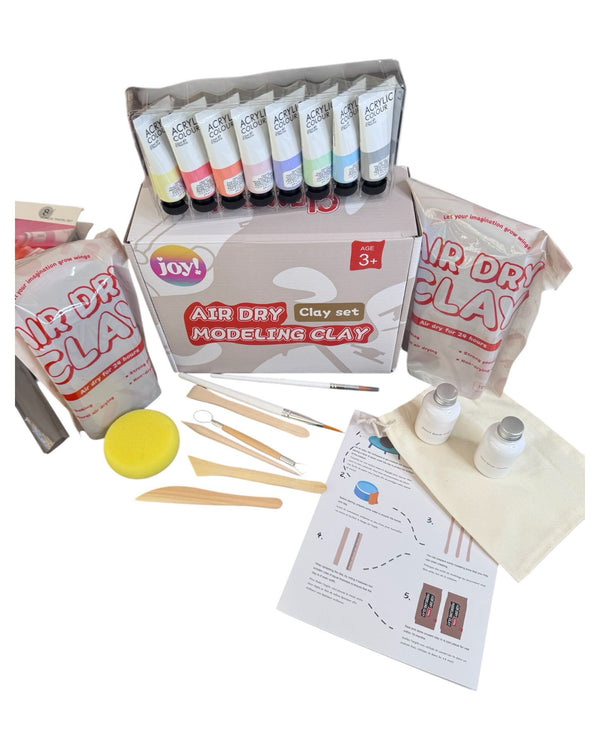Fast & tracked delivery
Your dose of creativity arrives quickly at your home, you can track your package right to your mailbox.

Self-hardening clay is a favorite among craft enthusiasts : it doesn't require baking, dries naturally, and lends itself to endless decorative uses. But one question often arises: which paint should you choose to decorate and protect your creations?
Don't worry: whether you're a beginner, a parent with children, or a creative arts enthusiast, there are simple and accessible solutions to achieve superb results. 🎨

Everything you need to model, paint and protect your creations : clay, tools, paints and DIY ideas for beginners and enthusiasts.
🎨 Discover our self-hardening clay kitsNot all paints are created equal for no-bake clay. Here are the most commonly used options, along with their benefits:
| Type of paint | Benefits | Weaknesses |
|---|---|---|
| Acrylic | Durable, covering, varied colors | Requires a protective varnish |
| Gouache | Ideal for children, economical | Not very resistant without protection |
| Pastel | Soft and trendy effect | Limited palette |
| Spray | Quick and even application | Less precise for details |
Acrylic paint is arguably the best no-bake clay paint . It has several benefits that make it the number one choice for beginners and enthusiasts alike:
To achieve a smooth and long-lasting result, a few simple steps are essential:
Self-hardening clay is an ideal medium for expressing your creativity. Here are some self-hardening clay painting techniques to explore:
Once your creations are painted, it is strongly recommended to add a clay paint protection :

The self-hardening clay and pastel paint kit contains everything you need to model, paint and protect your creations.
🎨 Discover the self-hardening clay kitAlthough acrylic paint is easy to use, here are some common mistakes to avoid:
Some tips to give your creations even more style:
Can you paint directly on self-hardening clay?
Yes, but it is recommended to wait until the clay is completely dry. For best results, apply a base coat as a primer to improve paint adhesion.
What is the best no-bake clay paint?
Acrylic paint is the most suitable: it provides coverage, is durable, and is easy to use. It comes in a wide range of shades, from bright colors to pastels.
Do you always need to varnish after painting?
Protective clay varnish is recommended. It protects your creations, sets the color, and allows you to choose the desired finish (matte, satin, or glossy).
What paints should be avoided for self-hardening clay?
Oil-based or oily paints are not recommended because they do not adhere well to clay and may flake off over time.
How to get a durable paint on clay?
Work in thin layers of acrylic paint , let it dry between each layer, then apply a varnish or linseed oil for better waterproofing and durability.
Commodo lorem morbi aliquam dui turpis. Iaculis pretium poses nulla tincidunt blandit. A at elementum faucibus integer.

Your dose of creativity arrives quickly at your home, you can track your package right to your mailbox.

Got a problem? Don't panic, you have 15 days to change your mind.

Creative activities for young and old (from 0 to 77 years old!), perfect for disconnecting from screens and spending real time together.

JOY! is fun, colorful, and a touch of madness to dust off your creative leisure activities!
